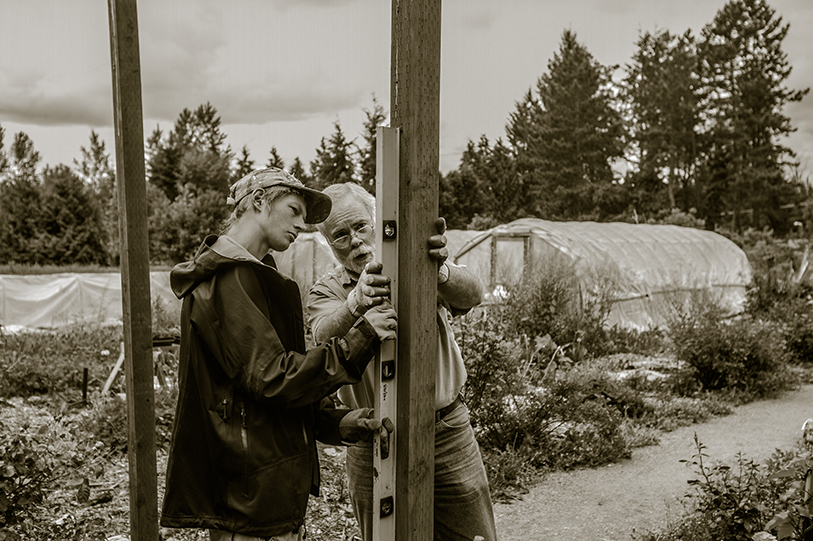| The first two weeks at Songaia were relatively fast-paced. Patricia was in charge of showing me around and took me for a tour of the garden, explaining along the way the different tasks we would be working on in the coming days. The food forest is quite impressive, both by its size and by the diversity of plants that are sharing virtually all the space available. Almost every time I walk by it, I discover another plant I hadn’t noticed previously. On one occasion, Helen took Max and me in a tour of Picardo Farm, a community garden in Northeast Seattle. The farm is about a hundred thousand square feet, and has been divided into nearly three hundred small plots. People have used ingenious systems to use up the entire space of their lots, with maximum functionality. Some have installed what I refer to as a “potato tower,” in which the potatoes are planted in little towers of soil surrounded by a framework of metal that holds the entire setup together. It is then possible to harvest all the potatoes at once, without having to search for them, eliminating the prospect of losing a few as well. It’s always quite interesting to see what other people have come up with. | Patricia had told me about the ravages done by the rabbits and the slugs. The potager was therefore fenced off with a makeshift mesh while we are working on erecting a permanent rabbit-proof fence. Tom showed us how to dig postholes, pour concrete, level, and erect the gateposts. I also walked around picking up the innumerable slugs assaulting the beautiful lettuces. One of the nice things about having an organic garden is that you have to improvise quite a lot to get rid of the pests, because you can’t use pesticides and therefore you rely on one or several tricks to do the job. For instance, the other day I browsed the Internet and looked at the plants that naturally repelled slugs. It turns out there are a few, and perhaps that building a “fence” using those plants could help keep the slug population down. One of the key concepts of permaculture is that you have to try and see for yourself. When working in the food forest with Katie we noticed that mushrooms were growing in the sawdust used as mulch. There was only one kind of them growing there, and they seem to have colonized the entire food forest, as well as the potato patch where they grow in especially big clusters. However, we didn’t try them for we thought they might be poisonous, because no animal seems to have nibbled at them. They looked great, however, with their brown, crusty color and the little cracks running on the cap, as though they had just been baked. When Max came back from the mushroom orientation he told me that those guys were indeed edible, but quite bitter when raw, hence the possible explanation of why animals don’t seem to be interested in them. |
|
Those first two weeks were interesting from the standpoint of a beginner in the field of permaculture. I realized that we all encounter more or less the same mishaps in the garden, and that people will always have different tricks on how to deal with them.
1 Comment
|
AuthorGarden bloggers are community members, volunteers and interns at Songaia. Archives
July 2024
Categories |





 RSS Feed
RSS Feed